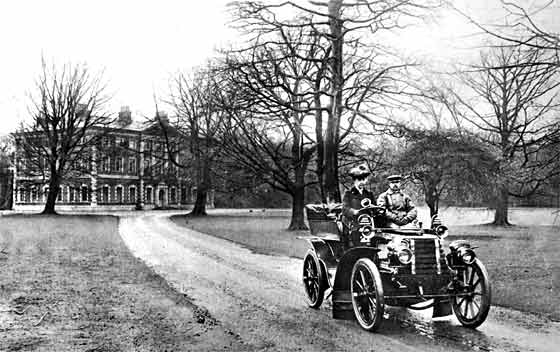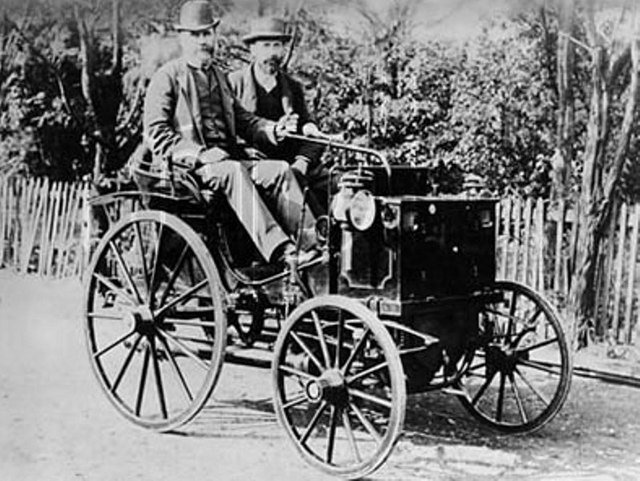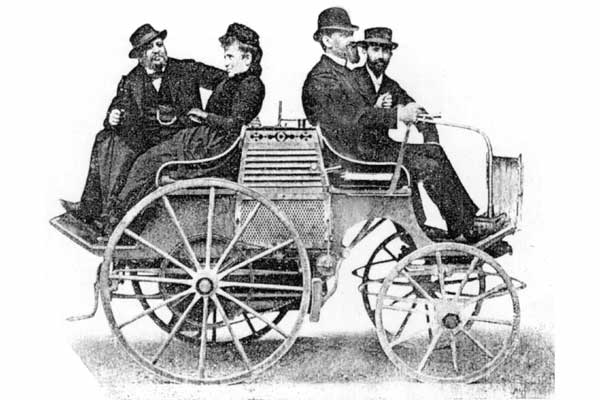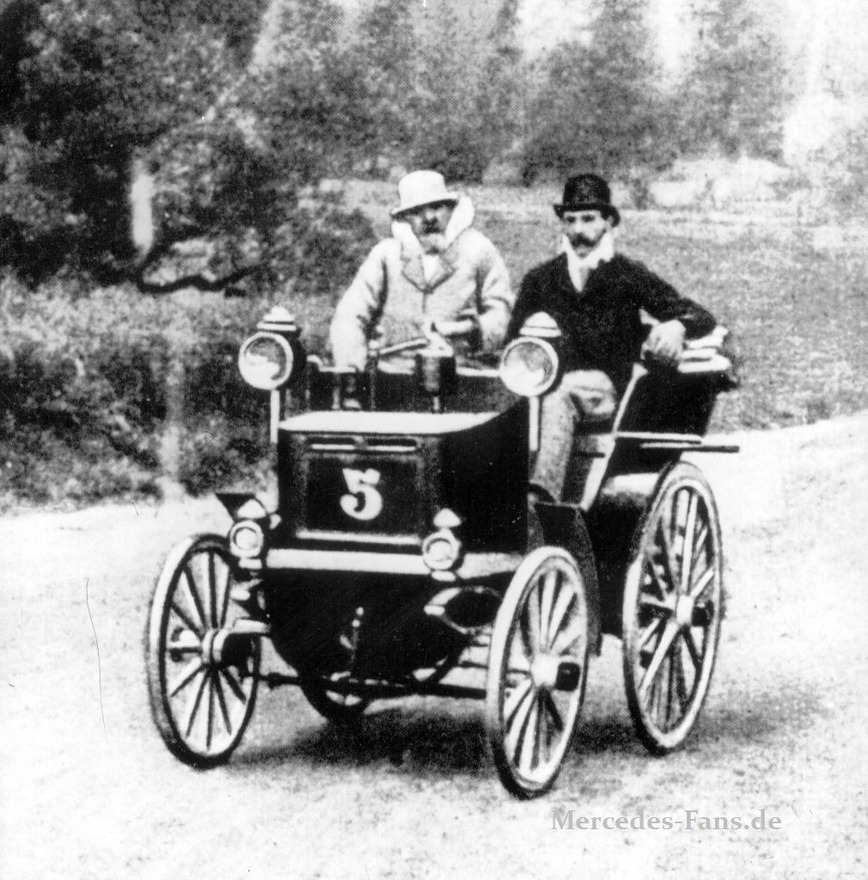“The drivers were maxing their cars out. Wheel spokes were snapping when hitting the stones, drive chains were breaking, the carburettors of petrol-powered automobiles and burners of steam cars were getting blocked with dust, and engines were breaking down. Pressure in steam engines was dropping on difficult road sections, making the drivers spend time raising steam. The stokers standing on footboards were choking with smoke”.
Based on the stories told by the eyewitnesses, the competition was incredibly tense. Only 13 petrol and two steam cars crossed the finish line. First place was shared by the automobiles developed by Levassor and Peugeot — they were able to travel at an average speed of 20.5 km/h. Their cars proved themselves to be fuel-efficient, safe, responsive and easy to maintain, which was rather uncommon in the 19th century. It was then that the first speed record for a car fitted with an internal combustion engine was set. People started to realise that cars were not just meant for vacant rides and holiday visits — they could take you from one destination to another faster and safer than the most reliable horse wagons.
However, path to high speeds turned out to be thorny. At first, inventors were just mounting an engine to a horse wagon. It was located in the rear under the seats. The majority of other units were also inherited from horse-drawn carriages or bicycles. However, housing the engine in the rear part of the wagon became a problem as it needed cooling, and drive belts (which delivered the torque from the engine to the wheels) could not bear the load. The cars were advancing together with the ideas and drawings of the most talented automotive designers. It was time to stop travelling from house to house and start speed racing.

In 1889, his fellow Edouard Sarazin acquired a license from Daimler to build two-cylinder internal combustion engines, which kindled Émile’s interest in engine design. He decided to build a race car. When Sarazin died, Levassor married his widow, dowered the Daimler license and continued manufacturing engines. Périn’s company passed into the hands of Panhard and Levassor. In a short while, they launched production of engines under the Panhard et Levassor brand.

The distance of that track was 127 km — from Paris to Rouen. One hundred and two automobiles arrived to the start. No restrictions were applied to self-propelled vehicles and that is why petrol, steam and even electric cars came to participate in the race. Some of the cars aroused a lot of interest — based on the words of their designers and drivers, they were running with the help of force of gravity or powered by “compressed water”. In spite of everything, they were also admitted. However, only 14 petrol and 7 steam automobiles lined up on the start line, as more than half of the vehicles could not even start during the elimination runs.
The world’s first race had important consequences for automotive manufacturing. It proved a car to be an efficient carriage and showed the inventors the line of further development. It became obvious for many of them which parts and units had to be improved or even redesigned.

Ever since, we know the famous words he said after the finish: “It was just crazy! I was reaching up to 30 km/h!” However, this story did not have a happy ending. In 1896, Émile took part in the Paris-Marseille-Paris race and had a serious crash. Papers reported that Levassor risked his life trying to avoid hitting a dog. The following year, the talented engineer died in Paris, where his fellow citizens erected a monument on the spot of the original finish line for the famous race.
Panhard et Levassor operated in the car market until 1965 and was absorbed by a stronger company Citroën. World records are not always awarded with fame and laurels. Sometimes they are set at the cost of someone's life.










